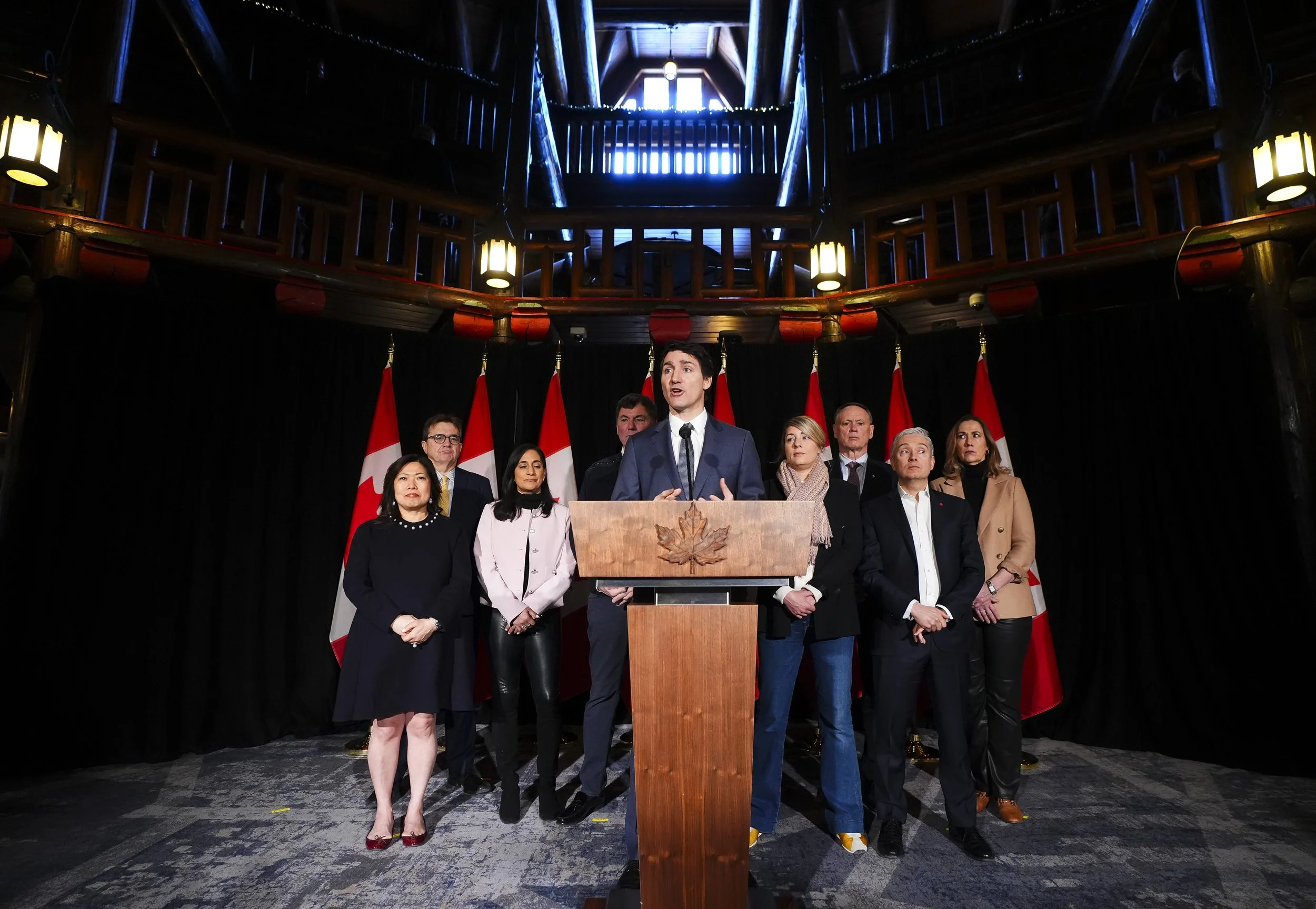America First, Canada at Risk
It’s been a dizzying week for Canada-U.S. relations, so let’s take stock of what’s transpired since Donald Trump’s inauguration on Monday afternoon.
No tariffs on Canada materialized on Day One as had been threatened, but the specter of a trade war still looms large
Trump continues to threaten Canada with massive duties, including during a virtual address to the World Economic Forum in Davos
In fact, he seems increasingly to be singling us out. “We have a tremendous deficit with Canada. We’re not going to have that anymore,” Trump said at Davos. Strangely, Canada has become Exhibit A in his broader critique of global trade practices, despite accounting for only 5% of the U.S.’s global trade deficits
The U.S. president signed a flurry of executive orders—spanning trade, immigration, climate policy, energy, and more—that significantly signal his intent to rewire the global economy. The message from Washington is unmistakable: any practice the U.S. perceives as an unfair advantage—on terms they define—is now subject to revision
Prime Minister Justin Trudeau’s government—bunkered up earlier this week near Ottawa to brace for tariffs—has adopted a dual approach in response: reminding Americans of the mutual benefits of economic ties while issuing warnings of significant retaliatory tariffs should collaboration fail to prevail
The governing Liberal Party is now fully consumed by a leadership race to replace Trudeau, where the question of who is best able to deal with Trump has become central
So where does that leave us?
Markets may provide a clue. Despite Trump’s whirlwind of threats, investors have remained relatively calm. Canadian stocks jumped 1.6% this week, and the Canadian dollar inched higher—hardly a sign of distress.
Investors appear to be pricing in a low probability of a full-on trade war and expecting a structured approach to tariffs rather than a scattershot one.
Markets are telling us they believe Trump’s rhetoric is likely a negotiating stance, an opening salvo perhaps for renegotiating the Canada-U.S.-Mexico free trade agreement.
The likelihood of some targeted tariffs at some point still remains high. Key industries vulnerable to U.S. action include:
Wood products and food manufacturing: Both have large trade surpluses with the U.S.
The auto industry: Despite relatively balanced trade when factoring in auto parts, Trump continues to single it out.
Primary metal manufacturing: Steel and aluminum face significant risk from potential tariffs.
In the medium and long term—with Canada’s limited trade diversification options and slim odds of winning a prolonged tariff war—we must adapt our trade policies to the shifts taking place in the U.S. This will almost certainly mean Canadians consuming more U.S.-produced goods and services, and fewer from the rest of the world.
Economic rewrite
Even if a major trade war is averted, Ottawa must not ignore a deeper reality: Trump is executing a systemic rewrite of U.S. economic policy that will fundamentally alter how Canadians think about our place in the world, run our economy, and trade.
This shift will pull us more deeply into the U.S. economic orbit while forcing us to become more competitive with the Americans for both Canadian and global capital—something Trump is aggressively courting.
At its core, Trump’s America First Trade Policy frames global trade as zero-sum. His message is clear: the U.S. wants investment and production at home, and he’s willing to upend the current landscape to achieve that goal.
These shifts pose serious risks to Canada’s economy, tariffs or not.
Trump’s sweeping review of trade deficits, agreements, and currency manipulation places Canada-specific issues in the spotlight. Exemptions on U.S. steel and aluminum tariffs are being reassessed, and scrutiny is likely to increase on Canada’s digital services tax and other mandated charges on U.S. tech giants. Writing in The Hub, Michael Geist outlined how these changes could undermine Canada’s digital policy ambitions.
The challenges extend far beyond trade. Trump’s withdrawal from the new global tax regime for multinationals—already implemented by Canada—could leave our businesses at a significant disadvantage. Meanwhile, the U.S. exit from the Paris Agreement undermines Canada’s ability to pursue independent climate policy without sacrificing competitiveness. Without deep economic reforms at home to make our economy more attractive to investors, we risk watching even more businesses and capital shift south of the border.






